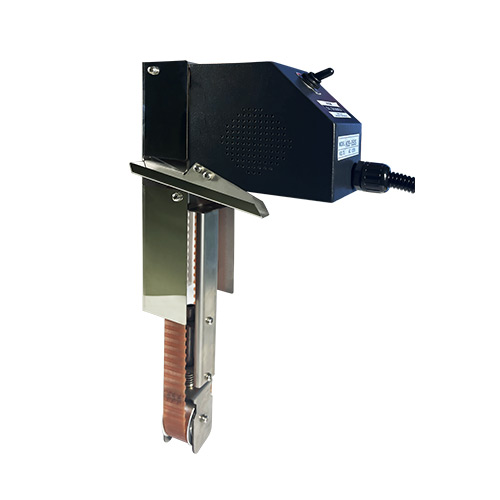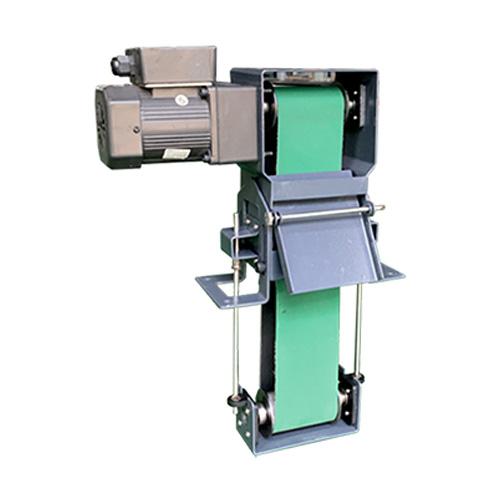-
WhatsAPP: +86 18706448138
-
Tengzhou, Shandong, China

Essential Guide to CNC Pulse Generators for Beginners
In today’s competitive manufacturing landscape, CNC pulse generators play a pivotal role in ensuring precision,control, and flexibility.
Table of Contents
Introduction

In today’s competitive manufacturing landscape, CNC pulse generators play a pivotal role in ensuring precision, control, and flexibility in CNC machining environments. Whether you’re setting up a new CNC system or troubleshooting existing equipment, understanding the function and value of CNC pulse generators is essential.
These devices act as manual input tools that allow operators to simulate movements on specific machine axes. They’re especially useful during setup, tool alignment, maintenance, and emergency adjustments—when precision cannot be compromised. For beginners, learning how these generators work can dramatically improve both machine control and operator confidence.
At Shansen, we have worked closely with clients across industries to develop CNC pulse generators that meet real-world demands. With high-quality components, customizable designs, and responsive support, we strive to be a trusted partner in every phase of CNC machine operation.
What Is a CNC Pulse Generator?
A CNC pulse generator, often called a manual pulse generator (MPG) or handwheel encoder, is an input device used in CNC systems to control the position of a machine’s moving parts. Unlike automated instructions sent from a computer, a CNC pulse generator allows human operators to move machine axes incrementally with great precision.
How It Works
When you rotate the dial on a CNC pulse generator, it sends out a series of electrical pulses. Each pulse represents a defined unit of movement. The CNC controller receives these pulses and translates them into physical motion—typically of the tool head or table—in the X, Y, Z, or additional axes.
These devices are indispensable during:
- Manual operations
- Machine setup and calibration
- Tool or workpiece alignment
- System testing and troubleshooting
Thanks to their intuitive design, CNC pulse generators reduce the learning curve for new operators while maintaining operational safety and precision.
Components of CNC Pulse Generators

A CNC pulse generator might look simple from the outside, but internally, it’s a blend of intricate parts working together to offer controlled motion. Understanding each component helps you make informed decisions when selecting or maintaining your generator.
Rotary Encoder
The rotary encoder is the core sensing element that converts rotational motion into electronic pulses. High-resolution encoders deliver more pulses per revolution, which translates to more precise control.
Selector Switches
Most pulse generators come with axis selector switches, enabling users to choose which machine axis (X, Y, Z, or others) they want to control. This feature adds flexibility and reduces the need for multiple devices.
Output Interface
Different systems require different output signals such as TTL, open collector, or line driver. This ensures compatibility with various CNC control systems and reduces signal interference.
Mounting and Housing
Generators come in handheld or panel-mounted options. Their enclosures are often made of aluminum or industrial ABS plastic to withstand factory conditions like vibration, dust, and temperature fluctuations.
Connector and Cable Assembly
A durable, shielded cable ensures accurate signal transmission while minimizing electrical noise. Most cables also come with protective sleeves to prevent wear and tear in dynamic setups.
At Shansen, our engineers design each component with both performance and user comfort in mind, resulting in highly reliable CNC pulse generators that excel in industrial settings.
Why CNC Pulse Generators Are Crucial for Precision Machining
Precision is the heart of CNC manufacturing. Without accurate positioning and reliable control, even the most advanced machines can underperform. This is where CNC pulse generators shine.
These devices provide the manual control necessary for:
- Tool calibration: Adjust tools with micrometer-level precision before running automated cycles.
- Workpiece alignment: Manually position the workpiece for exact machining origin.
- Error correction: Adjust positioning on the fly without restarting operations.
- Testing: Check each machine axis during setup without risking tool or part damage.
Imagine setting up a complex milling job without being able to jog the machine manually. You’d rely entirely on automated systems, which could introduce errors if the machine wasn’t calibrated properly. CNC pulse generators act as the operator’s hands inside the system, offering total control over movement.
Shansen’s line of CNC pulse generators is designed for such real-world challenges. Our clients use them in environments that require nothing short of perfection—such as aerospace manufacturing, mold-making, and high-precision prototyping.
Table: Key Specifications to Consider When Choosing CNC Pulse Generators
Choosing a CNC pulse generator isn’t just about matching voltage or connector types. It’s about selecting a model that complements your specific operation. Below is a table summarizing key specifications that buyers should evaluate:
| Specification | Description |
|---|---|
| Resolution | Pulses per revolution; higher values allow finer movement control |
| Output Signal Type | TTL, Line Driver, or Open Collector depending on system compatibility |
| Axis Selection Options | Number of selectable machine axes (commonly 3 to 6) |
| Handwheel Material | Metal or ABS plastic affects durability and weight |
| Mounting Type | Handheld for portability or panel-mounted for fixed operations |
| Operating Voltage | Typical options are 5V, 12V, or 24V; match with your machine requirements |
| Cable Length | Ranges from 1.5 to 5 meters for different installation scenarios |
| IP Rating | Resistance to dust and water; IP65 is ideal for industrial environments |
Each of these features plays a role in determining whether the generator will perform optimally in your CNC setup.
How to Select the Right CNC Pulse Generator

Choosing the correct CNC pulse generator is crucial for efficiency and long-term reliability. Below are factors to consider when making a purchase decision:
Machine Compatibility
Always verify that the generator matches the input requirements of your CNC controller. Mismatched voltage or signal types can lead to malfunction or damage.
Operational Requirements
Do you need a generator for fine adjustments during milling? Or do you need rapid jogging during setup? Select a resolution and signal type that meets your exact use case.
Environmental Conditions
If you’re working in a high-dust or moisture-prone environment, make sure to choose a generator with at least IP65 protection. This ensures longevity and reliability.
Ergonomics and Usability
A poorly designed handwheel can lead to operator fatigue or even injury. Look for models that balance weight, grip, and feedback for comfortable use over long shifts.
Support and Customization
Partnering with a manufacturer like Shansen means gaining access to tailored solutions. We offer custom interface design, signal modification, and OEM labeling based on customer needs.
Installation and Maintenance Tips for CNC Pulse Generators
Installing and maintaining your CNC pulse generator correctly ensures smooth operation and long device life.
Installation Tips
- Read Manuals Thoroughly: Follow manufacturer guidelines to avoid voiding the warranty.
- Use Proper Mounting: Securely fasten the generator to prevent vibrations from affecting signal accuracy.
- Grounding Matters: Proper grounding reduces electrical noise and improves signal integrity.
Maintenance Best Practices
- Regular Cleaning: Dust buildup inside the rotary encoder can impair signal generation.
- Cable Inspection: Look for frayed wires or broken connectors, especially in dynamic machines.
- Calibration Checks: Ensure that each pulse corresponds to the correct movement range on your machine.
At Shansen, we provide detailed technical documentation and training support, ensuring that clients get the most from their pulse generators.
Common Mistakes to Avoid When Using CNC Pulse Generators
Understanding what not to do is just as important as knowing the right steps.
Mistakes Include:
- Skipping Compatibility Checks: This leads to communication errors between the generator and controller.
- Improper Mounting: Unstable installations may introduce inaccuracies or cause the device to fail prematurely.
- Neglecting Preventive Maintenance: Small issues can turn into costly downtime if left unaddressed.
- Operator Misuse: Without proper training, users may inadvertently send incorrect signals or damage components.
Avoiding these errors will save time, reduce repair costs, and increase machine uptime.
Shansen: Your Trusted Partner for CNC Pulse Generators

With over a decade of experience in CNC electrical systems, Shansen is a pioneer in the development and manufacturing of high-performance CNC pulse generators. Our products are used globally across industries where precision and reliability are non-negotiable.
What Sets Shansen Apart?
- Custom Engineering: Tailored designs to meet the specific needs of OEMs and factories.
- Stringent Testing: All pulse generators undergo full inspection for signal accuracy and durability.
- Technical Support: Real-time support and troubleshooting, available in multiple languages.
- Long-Term Partnerships: We aim to build not just business, but trust.
We understand that your CNC machine is only as accurate as the components you use. That’s why our clients trust Shansen for consistent quality, expert consultation, and superior after-sales service.
Conclusion
Mastering CNC machinery starts with understanding its key components, and CNC pulse generators are among the most critical. These devices provide the flexibility and precision needed during setup, alignment, and troubleshooting phases, giving operators complete control over complex systems.
By investing in high-quality, reliable pulse generators, you not only enhance machine performance but also ensure operator safety and confidence.
Ready to upgrade your CNC setup? Contact us at Shansen today for expert advice, tailored product recommendations, and world-class support. Let us help you take the first step toward precision-driven success.
FAQ
What is the purpose of a CNC pulse generator?
It provides manual control over CNC machine axes, allowing operators to make micro-adjustments during setup, alignment, or diagnostics.
Can I use any pulse generator with my CNC machine?
No. Always check voltage, signal output type, and connector compatibility to ensure proper integration.
What does resolution mean in this context?
Resolution refers to the number of pulses per revolution. Higher resolutions offer finer control and are ideal for delicate operations.



